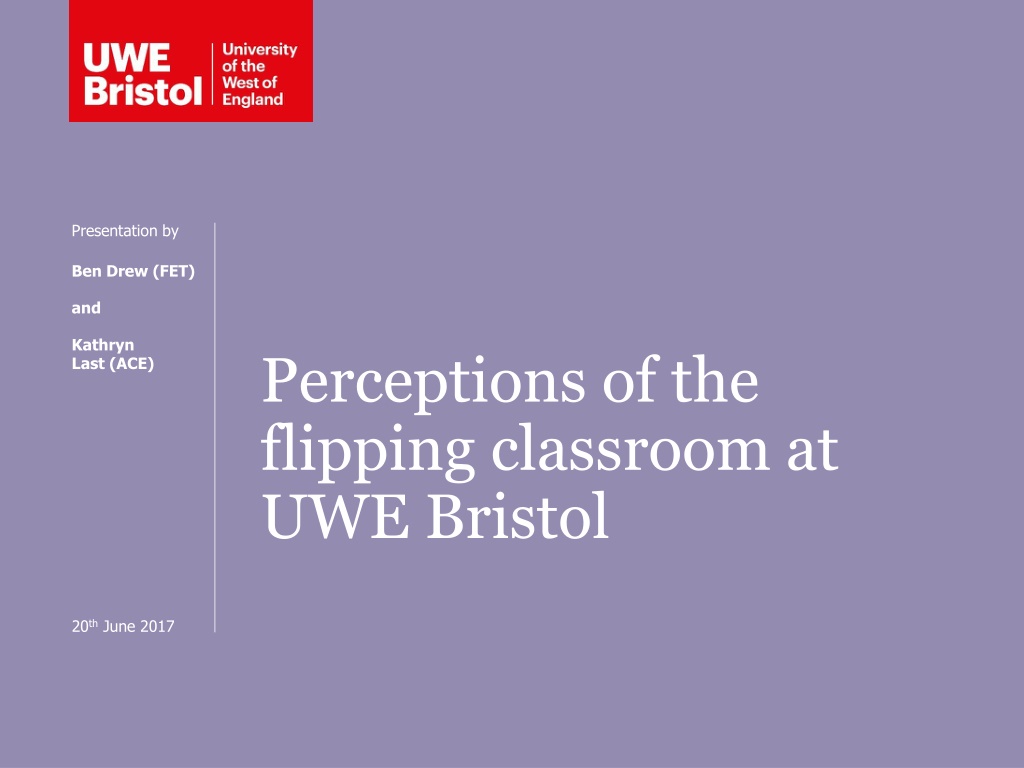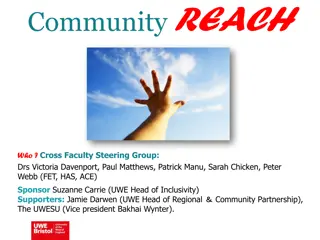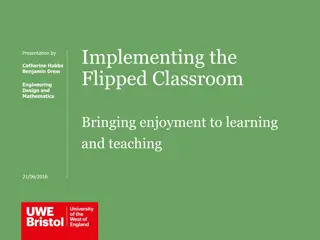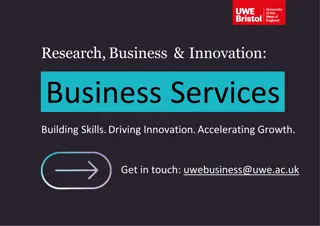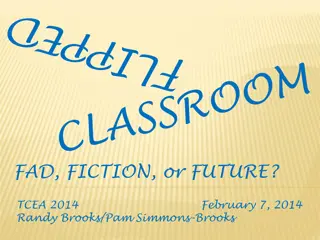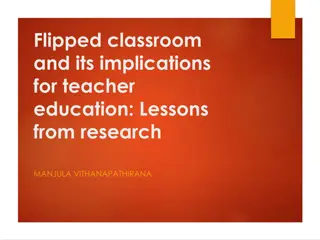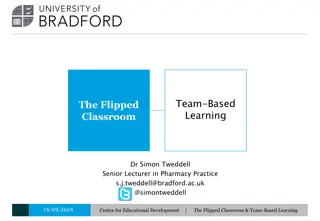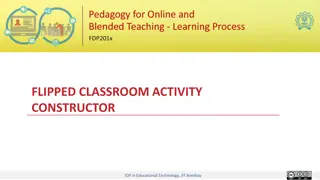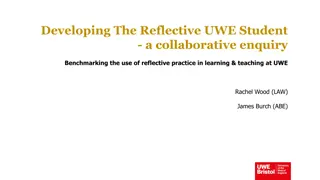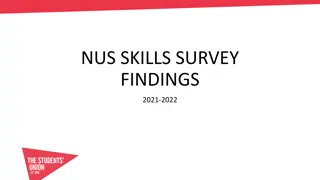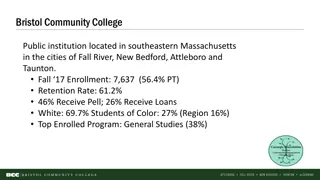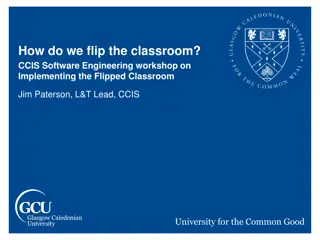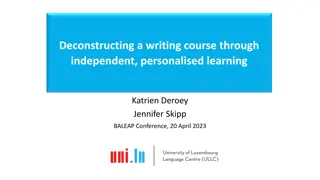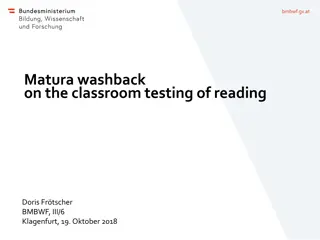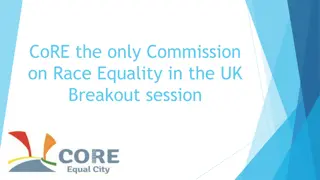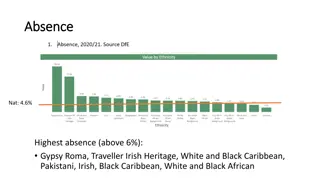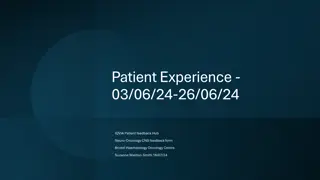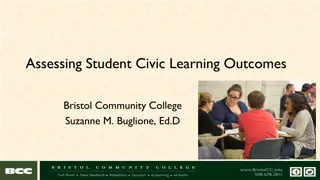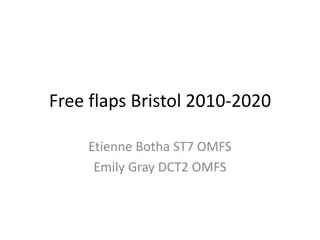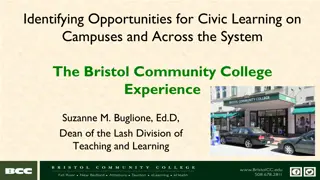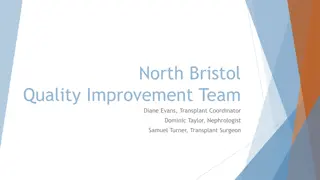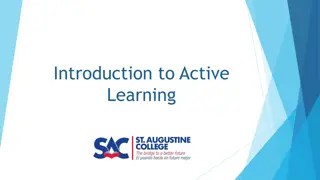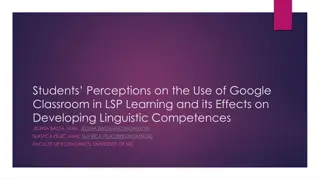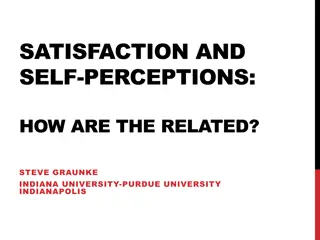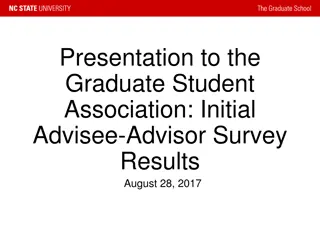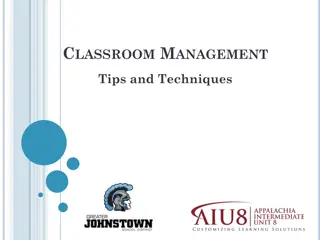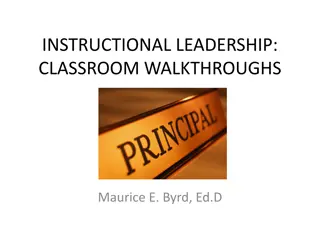Perceptions of the Flipped Classroom Approach at UWE Bristol
This presentation explores the perceptions of the flipped classroom approach at UWE Bristol, focusing on the findings from a research project that gathered insights from students and academics. It covers the definition of the flipped classroom, theoretical frameworks, and the context in which it is implemented, considering factors like the effectiveness of video lectures and the evolving learning preferences of today's digital-native students.
Download Presentation

Please find below an Image/Link to download the presentation.
The content on the website is provided AS IS for your information and personal use only. It may not be sold, licensed, or shared on other websites without obtaining consent from the author. Download presentation by click this link. If you encounter any issues during the download, it is possible that the publisher has removed the file from their server.
E N D
Presentation Transcript
Presentation by Ben Drew (FET) and Kathryn Last (ACE) Perceptions of the flipping classroom at UWE Bristol 20thJune 2017
Are you considering implementing the flipped approach in your module? A. Yes, definitely. B. Probably, but I want to know more. C. Possibly, but I am apprehensive. D. Probably not. I don t think the students benefit. E. No. I see no benefit. 0% 0% 0% 0% 0% Yes, definitely. No. I see no benefit. Probably not. I don t thin... Possibly, but I am appre... Probably, but I want to ...
Outline What is the Flipped Classroom ?, Theory and Context The Research Project Findings the student s perceptions The Academic perspective
What is the Flipped Classroom? [Flipping] the classroom means that events that have traditionally taken place in the classroom now take place outside the classroom and vice versa Lage, Platt And Treglia, (2000) The definition is usually refined to one where the classroom activities are interactive and where technology is used for the lecture aspect of the teaching. (Bishop and Verleger, 2013)
The Theory Source: Williams, B. (2013). How I flipped my classroom. NNNC Conference, Norfolk, NE Anderson and Krathwohl, (2001)
The context of the Flipped Classroom This sits in a context where: There is evidence that video lectures are at least as effective as in person lectures (Zhang et al, 2006; Bishop and Verleger, 2013; Davies, Dean And Ball, 2013) and that technology is an important defining aspect of the flipped classroom (Strayer, 2012). In the UK as in the USA this is in the political and social context where students are paying more for their tuition through university fees (Universities UK, 2013) and there are more and more educational resources and information available for free on line. This is Generation Y: The Millennials or digital natives that have grown up with Technology Enhanced Learning (Prensky, 2010)
The Context There was evidence that the way young people learn was changing and that their brains are literally wired differently. (Brown, 2002; Ertmer and Newby, 2013)
The advantages and disadvantages of Flipping Advantages Disadvantages Fosters independent learning Time to create resources Promotes peer interaction and collaboration Marking frequent tests Learning central rather than teaching Access to resources Individual attention Student buy-in Higher student engagement Answering questions around pre- work
Our Research UWE Learning and Teaching Fellow Research Project 2 years Joint research between the Departments of Education and Childhood, Engineering Design and Maths and Health and Social Sciences Four modules used the flipped classroom approach to teaching: 1 used lecture capture (FET) 1 used readings (FET) 2 used a combination of both (HAS) Year 1: The engineering module is classed as a long thin module so half was taught traditionally (TB1) and half using the flipped classroom style (TB2) Year 2: Engineering module split to be two short fat modules.
Methodology The research took a summative evaluation methodological approach It used a mixed methods approach: Pre and Post teaching questionnaire about attitudes to learning providing quantitative data using a Likert Scale - 169 that could be included in the data Focus groups with the students 9 in total Interviews with the staff -3
The Findings Questionnaire Data from engineering group (FET): The research is ongoing but the findings of the first year showed: The students were more likely to agree with the statements: I feel comfortable raising questions with staff about what I am learning I am responsible for my learning I use feedback on my work to improve in the future I feel confident contributing to seminars They were more likely to disagree with the statements: When I find learning too challenging I give up I prefer to follow other people s ideas than develop my own I do not like it when I find learning challenging They also indicated through their responses that they were more likely to agree with the statements: I like to test my ideas with other people I find it easy to connect my experience to theoretical concepts and disagree with: I feel anxious about submitting written work No consistency: Other people seem to cope better with learning at university than I do.
The Findings Response from those in the focus groups Liked: Pre-work could be done at a time to suit them all the hard work was done in the session Questions to test knowledge and understanding It felt like it mattered to the lecturer that they did well so they wanted to please * Disliked: Part time students: couldn t do work every week (not found same this year) The lecture room *Staff reported that attendance was higher at end of module
The Academic Perspective Implementation is important: success of the approach is seems highly dependent on how it is implemented Variety of ways to deliver pre-study material Variety of ways to make contact time active learning Discussion here is how it was implemented in Engineering
Implementation Course Notes for module are comprehensive and cover all content in detail. Lecture slides and notes are produced from same source file, so everything is integrated. In Academic Year 2014-2015, all lectures were captured, edited and deployed via YouTube. Content remains the same.
Implementation Before Teaching Course notes adapted to include specific outcomes for each section and include in class questions and worked examples. Physical course notes provided to students at the start of module. Videos of lectures were re-processed to be bite-sized pieces (many less than 10 minutes long, focused on specific sections), with slides inserted over the top of audio to improve quality and production value.
Implementation Before Teaching Blackboard set up with learning materials collected in folders that opened on a weekly schedule Contents of the folder included solutions to end of chapter exercises, embedded videos for section, and the lecture slides (used in videos) DEMO.
Implementation During Teaching Before the teaching session, students work through content available on Blackboard and in course notes. The students do not have to watch the videos, as the content in the course notes is the same. During teaching session, active learning is undertaken: Turning point quiz Overview of content In class exercises with turning point response system Worked solutions/example problems Student led
Implementation During Teaching After teaching session, students attended tutorials in TEAL rooms Tutorials were structured with directed study all working in groups on specific problem with facilitation by academic Problem based on content, with a higher level question
Implementation Weekly process: IN CLASS Sessions: Active learning, practice applying key concepts with feedback DURING Tutorials: Sessions to go through problems BEFORE AFTER Pre-study using course notes and videos Independent study to extend understanding OUT OF CLASS
Perceptions The Negatives The upfront workload is high, especially if developing a flipped module from scratch. More lesson planning is involved: You need well-prepared pre-study material (multiple formats works well), the teaching sessions and tutorials need a well-defined plan and structure with integrated tests and ways to adapt to understanding. There is a need to prepare the students: Students were apprehensive about approach to start with engineering students have not had prior experience of the flipped style . But this perspective changed significantly.
Perceptions The Positives Atmosphere in the room is very satisfying; students working together, lots of use of their calculators, very engaged with the work. Good participation by everyone. Attendance good, despite all work being available online. Certainly no worse than traditional lectures. Students like the fact they have to work between sessions, and find revision much easier. Engagement with process was good. Anecdotal feedback and formal evaluation illustrates that the students prefer the implementation. Module feedback is lovely to read! Not evaluated formally, but pass rate and average mark are higher than years where the traditional method has been implemented.
Are you considering implementing the flipped approach in your module? A. Yes, definitely. B. Probably, but I want to know more. C. Possibly, but I am apprehensive. D. Probably not. I don t think the students benefit. E. No. I see no benefit. 0% 0% 0% 0% 0% Yes, definitely No. I see no benefit. Probably, but I want to... Probably not. I don t thin... Possibly, but I am appre...
References Anderson, L.W., Krathwohl, D.R.(2000) A Taxonomy For Learning Teaching And Assessing: A revision of blooms taxonomy of educational objectives NY: Pearson Bishop, J.L. and Verleger, M., (2013) The Flipped Classroom: A Survey Of The Research. 120th ANNUAL Conference of The American Society For Engineering Education 23-26 June 2013 Atlanta: ASEE Bloom, B. S., Engelhart, M. D., Furst, E. J., Hill, W. H. and Krathwohl, D. R. (1956). Taxonomy of educational objectives: The classification of educational goals. Handbook I: Cognitive domain. New York: David McKay Company Brown, J.S., (2002) Growing Up Digitial: How The Web Changes Work, Education And The Way People Learn. USDLA Journal 16(2) Available at: http://www.johnseelybrown.com/growing_up_digital.pdf Davies, R.S., Dean, D.L. and Ball., N. (2013) Flipping the classroom and instructional technology integration in college level information systems spreadsheet course Educational Technology Research and Development 61(4) pp. 563-580 Ertmer, P. and Newby, T.J., (2013) Behaviourism, Cognitivism, Constructivism: Comparing critical features from an instruction design perspective. Performance improvement quarterly, 26(2) pp.43-71 Lage, M.J., Platt, G.J. and Treglia, M., (2000) Inverting The Classroom: A Gateway To Creating An Inclusive Learning Environment The Journal of Economic Education 31(1) pp. 30-43 Prensky, M. (2010) Teaching Digital Natives: Partnering for Real Learning Newbury Park: Corwin Strayer, J. (2012) How learning in the in an inverted classroom influences cooperation, innovation and task orientation Learning Environments Research 15 pp.171-193 Universities UK (2013) Where do student fees go? London: Universities UK Williams, B. (2013). How I Flipped My Classroom. NNNC conference, Norfolk: New England. Available at: http://nextgenerationextension.org/2013/10/01/blooms- andthe-flipped-classroom/ [Accessed on: 3 January 2017] Zhang, D., Zhou, L., Briggs, R.O. and Nunamaker, J.F., (2006) Instructional video in e-learning: Assessing the interactive video on learning effectiveness. Information and Management 43(1) pp.15-27
